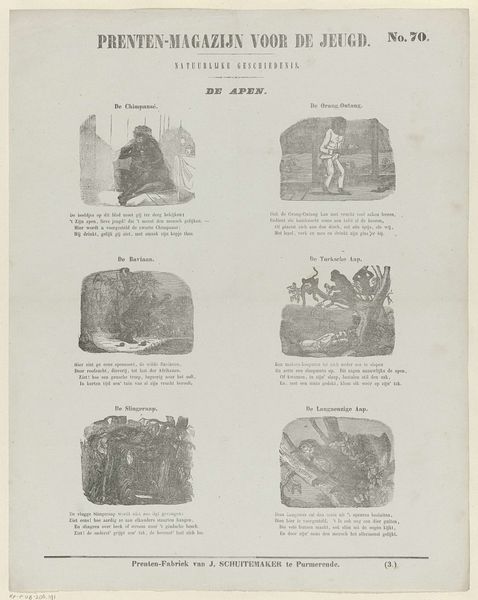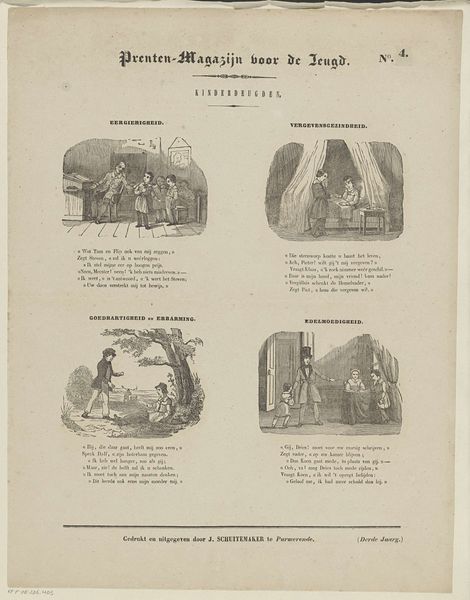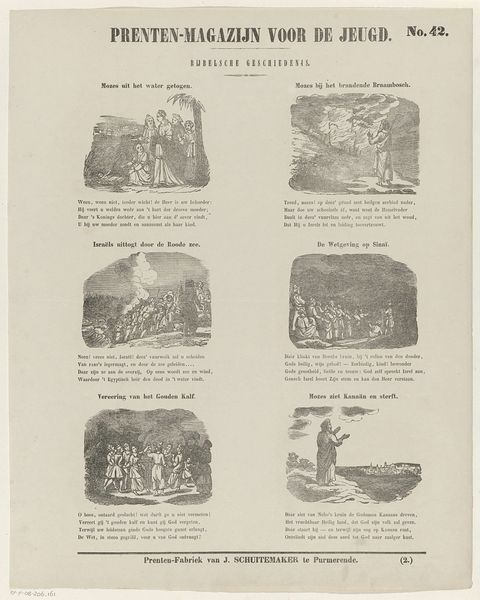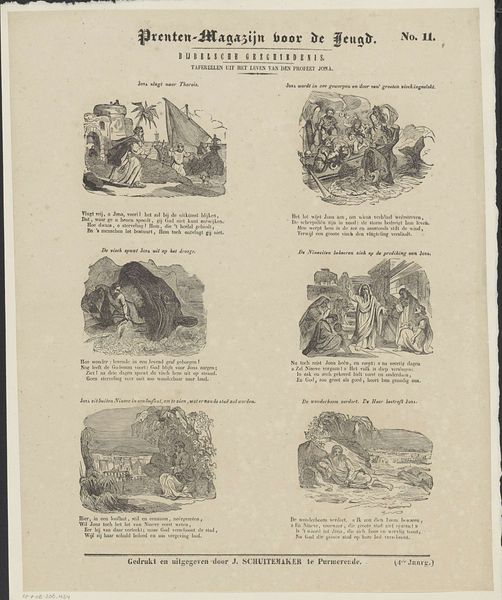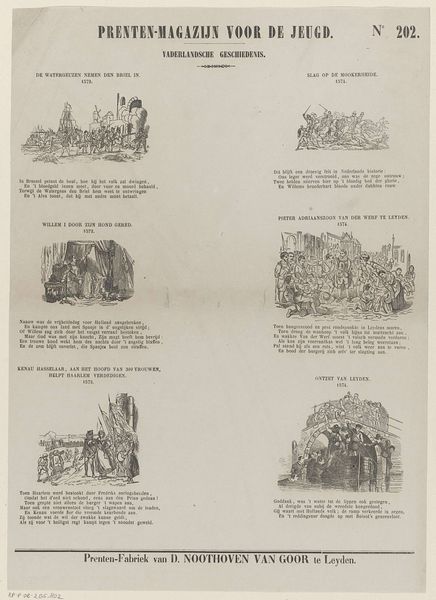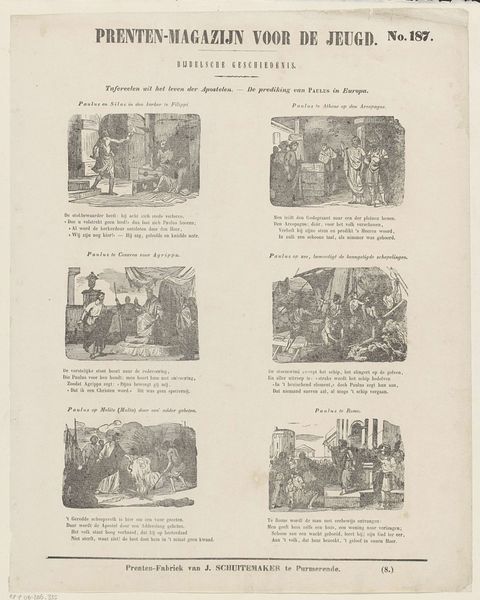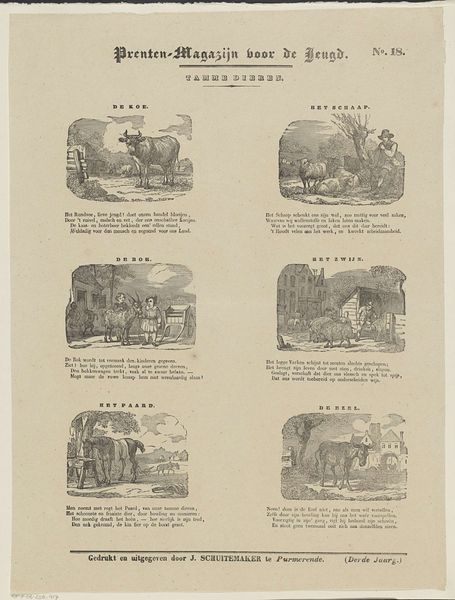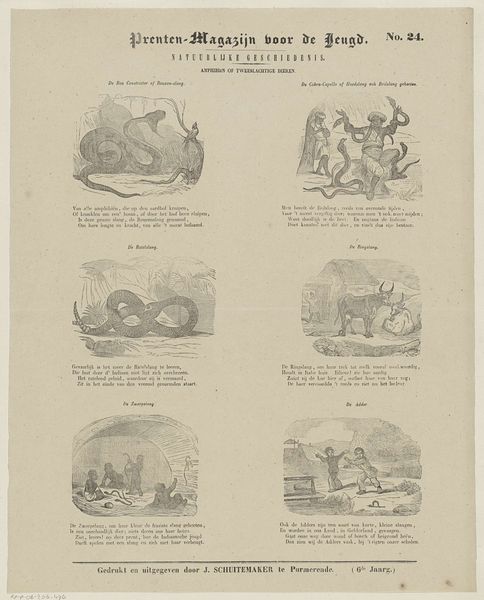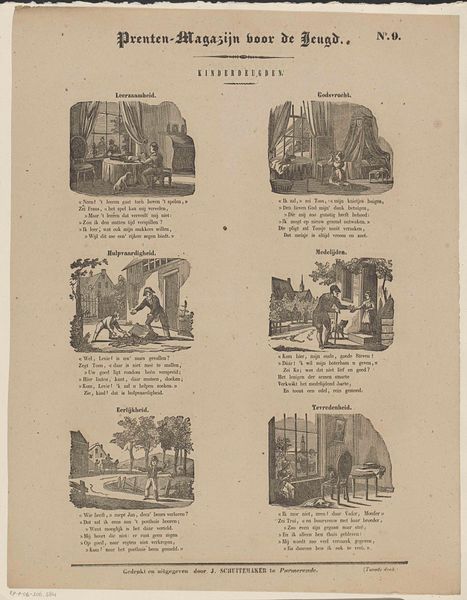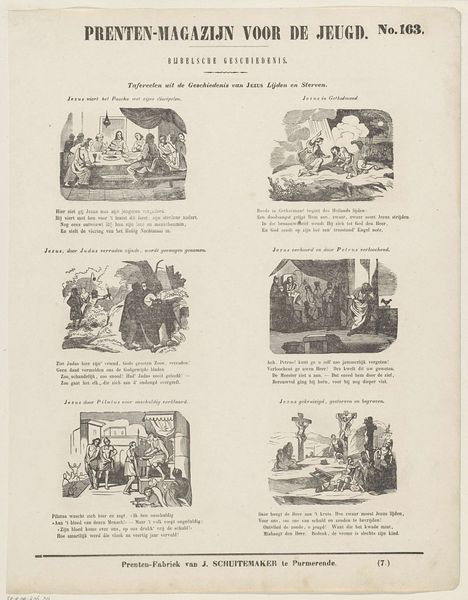
print, engraving
#
animal
# print
#
naturalism
#
engraving
Dimensions: height 430 mm, width 335 mm
Copyright: Rijks Museum: Open Domain
Editor: This print, "De Apen," or "The Apes," by Jan Schuitemaker from 1844, is fascinating. It presents several different species of apes in small vignettes. It strikes me as almost scientific in its presentation, like a page from a natural history book, but there's also something unsettling about the way they're depicted. What do you see in this piece? Curator: It's precisely that tension between scientific observation and subjective interpretation that grabs me. This print, created during a period of intense colonial expansion, offers a glimpse into how Europeans perceived and classified the "other." Consider how these images, circulated as educational material, contributed to the construction of racial hierarchies. Notice the captions. They aren't neutral descriptions, but laden with implied behaviors. How might that affect contemporary understandings of identity? Editor: I see what you mean. The Orangutan looks almost human, wearing clothes and standing upright, which blurs the line between animal and human. What’s the effect of portraying animals in such human-like ways, especially in that historical context? Curator: Exactly! This anthropomorphism is key. By projecting human qualities onto these apes, the image reinforces the perceived superiority of Europeans. This becomes especially sinister when you factor in scientific racism of the time which tried to biologically prove hierarchies. What ideas do you think magazines like this one spread in its intended younger audiences? Editor: So, it's not just a depiction of apes, but a reflection of the societal biases and power structures of 19th-century Europe? I guess I never considered how "scientific" illustrations could be so politically charged. Curator: Precisely. Art doesn't exist in a vacuum. It's crucial to examine how images like these participate in broader narratives of colonialism, race, and identity. This piece encourages us to think critically about how visual culture shapes our understanding of the world, even today. Editor: This really changes how I see this image. Thank you for shedding some light on its deeper historical and cultural implications.
Comments
No comments
Be the first to comment and join the conversation on the ultimate creative platform.
